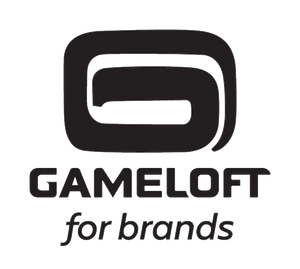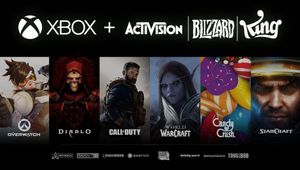
Why the Luxury Sector and Gaming are Made for Each Other

Casey Campbell, managing director, North America at Gameloft for brands, looks at how luxury brands are turning to games as a way to engage with their customers and prospects in new and entertaining ways.
In recent years, the value of the gaming audience has become much better understood by marketers. The old misconceptions about gamers being almost exclusively young, male, and obsessed with playing games to the exclusion of doing anything else are being demolished by the evidence.
For example, numerous studies have found that the gaming audience is vast and nuanced, with the typical gamer skewing towards being well educated, affluent, and having responsibility for major household purchases. Moreover, the sheer range of game genres available means that different types of games are favoured by different types of people. The fact is, brands can reach almost any type of demographic through the medium of games, and this fact has been jumped on by brands in a variety of sectors, including entertainment, sports, food and drink, and retail.
Sweet spot
Additionally, as the gaming audience has grown older – the average gamer is aged 34 – one sector, in particular, has started looking at gaming as an effective channel to reach out to customers and prospects – the luxury consumer product sector. In fact, while the gaming audience is skewing older, the audience for luxury goods and services is getting younger, creating a sweet spot in the middle where the gaming channel is proving appealing to a broad spectrum of luxury brand marketers. In this piece, I’d like to reference some examples of the luxury brands in question.
In September 2019, fashion house Louis Vuitton created skins – cosmetic add-ons that customise the look of games character or environment – for two characters in the League of Legends multiplayer online battle arena game, Qiyana and Senna. The skins made their debut in the League of Legends World Championships later the same year. Meanwhile, in August last year, Gucci teamed up with eSports company Fnatic to launch a limited-edition collection of 100 dive watches, priced at $1,600 each.
These collaborations may well have come to pass without the pandemic – indeed the Louis Vuitton skins predate Covid-19 by at least a couple of months – but others can definitely see a response to it. In the spring of 2020, as the world went into lockdown, top fashion labels Mark Jacobs and Valentino, deprived of real fashion shows and real catwalks, took to Nintendo’s Animal Crossing social simulation game to showcase their latest collections. In some cases, they even created pop-up stores in the game where players could buy virtual versions of their designs.
Other Animal Crossing campaigns have enabled players of Animal Crossing: New Horizons, launched in the spring of 2020, to dress up their avatars in clothes from Prada, Nike, Chanel, and Dior.
High-quality creative
Perhaps one of the reasons luxury brands like games is that, by their very nature, luxury brands rely on storytelling and high-quality creative to enforce their exclusivity and brand image – they’re selling more than just a product, they are selling an experience. So games, with their high-quality graphics and native integrations, have the necessary “cool” factor the brands are looking for.To showcase its Fall 21 collection, luxury fashion house Balenciaga created an online game called Afterworld: The Age of Tomorrow, in which players are invited to choose a fighter from a range of models, and attempt to conquer the world. Not only did the game showcase the collection in a very cool, bleeding-edge way, but it was also extremely inclusive, to the point where anyone could play, whether they aspired to wear the Balenciaga label or not.
Another appealing aspect of advertising in games is the opportunity it offers to reach people in luxury brand’s sweet spot from an age perspective where they consume most of their digital content – on mobile.
Mobile platforms are touch-oriented and tactile, and fashion is a natural fit for cool, stylish activations, along with trendy but practical tech like augmented reality (AR), which has been widely adopted by luxury brands.
To promote the opening of a new store in Shanghai, fashion house Dior created a game where players had to collect tokens in an interactive treasure hunt in the game to win tickets to the store opening. In 2018, Hermes launched a WeChat game called H-pitchhh, where players had to toss a horseshoe in order to win prizes – a reference to the brand’s origins as a maker of harnesses for horses – to unlock exclusive virtual content.
Gucci has embraced this idea wholeheartedly, on several fronts. Its integration with the Tennis Clash mobile game features the Gucci logo on and around the courts, rackets, and players’ headbands. A partnership with The North Face has enabled Pokemon GO players to kit out their avatars in items from The North Face x Gucci collection.
Gucci is also one of several brands to turn to AR as a way to enable consumers to try on its products at a time when stores were closed and people could not visit them. AR filled the gap, enabling consumers to try things out virtually – and safely. Other brands that have gone down this route include Dior, Chanel, Michael Kors, Burberry, and Net a Porter.
Bold move
But perhaps Gucci’s boldest move has been its launch in 2019 of Gucci Arcade. For this exercise, rather than fitting the brand into an existing game, Gucci has built games around the brand, with the initial two games – Gucci Bee and Gucci Ace – expanding to a collection of 14 games in its current incarnation. Going down this route has allowed Gucci an extra level of creative freedom and control while taking advantage of an existing audience base and engaging them in a new and entertaining way.This degree of native integration, of course, requires some effort, but help is at hand. At Gameloft, for example, our team of more than 120 game designers and artists are all dedicated exclusively to making interactive, gamified content for brands to help them achieve cut-through.
Our most recent work in this space has seen us partner with luxury car maker Lamborghini. The luxury car-maker’s aim was to reach out to a younger audience. To do so, we created a ‘Virtual to Reality’ Lamborghini-branded experience within our Asphalt 9: Legends racing game. For the first time ever, players of the game can drive Lamborghini’s super-premium and luxurious rare supercar, the Essenza SCV12. Developed by Lamborghini Squadra Corse and designed by Lamborghini Centro Stile, it’s the most powerful, naturally-aspirated 12-cylinder car ever, capable of outputting over 830 hp, and extremely rare – only 40 were ever made.
The “Lamborghini Essenza SCV12 Challenge” features three qualifying rounds, one playoff and a final which will be broadcast on 18 September, with fantastic prizes on offer to the winners, including vouchers for the Amazon and Lamborghini stores. We used five Asphalt 9: Legends player influencers to promote the campaign, which to data, has attracted 2m players, collectively clocking up 8m game sessions.
It’s numbers like these that are attracting so many luxury brands to gaming, and with so many well-known luxury brands putting their faith in the sector, it seems inevitable that others will follow.













